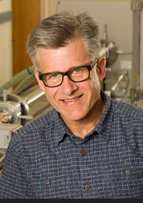C. Jeffrey Brinker Distinguished and Regent’s Professor, Emeritus

Dr. Brinker pioneered sol-gel-science and materials synthesis from soluble molecular precursors. He combined sol-gel processing with molecular self-assembly to create new classes of nanoscale materials for applications in energy and human health.
Dr. Brinker is currently one of two Sandia National Laboratory Fellows (the highest technical position at Sandia) and Distinguished and Regent’s Professor at the University of New Mexico (the highest honors bestowed upon UNM faculty) with joint appointments in the departments of Chemical and Biological Engineering, Molecular Genetics and Microbiology, and the UNM Comprehensive Cancer Center.
Curriculum Vitae (updated July 2019)